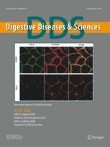|
Αρχειοθήκη ιστολογίου
-
►
2023
(138)
- ► Φεβρουαρίου (74)
- ► Ιανουαρίου (64)
-
►
2022
(849)
- ► Δεκεμβρίου (61)
- ► Σεπτεμβρίου (74)
- ► Φεβρουαρίου (65)
-
►
2021
(2936)
- ► Δεκεμβρίου (59)
- ► Σεπτεμβρίου (180)
- ► Φεβρουαρίου (325)
-
▼
2020
(1624)
- ► Δεκεμβρίου (293)
-
▼
Οκτωβρίου
(341)
-
▼
Οκτ 27
(17)
- The Effect of Wheel Exercise on Functional Indices...
- Respiratory Muscle Fatigue Alters Cycling Performa...
- PLCD1: A Potential Therapeutic Target in the Treat...
- Apical pelvic organ prolapse repair via vaginal‐as...
- Single‐incision laparoscopic full‐thickness anteri...
- Does the time from symptom onset to surgery affect...
- Laparoscopic surgery in patients with cystic fibro...
- Intestinal blood flow evaluation using the indocya...
- Primary anterior perineal hernia: A case report an...
- Comparison of postoperative plasma D‐dimer levels ...
- Is laparoscopic and endoscopic cooperative surgery...
- Causes of peritoneal injury during laparoscopic to...
- Finite element method for nerve root decompression...
- A Comparison of Conventionally Versus Digitally Fa...
- A rare case of colorectal traditional serrated ade...
- Association among serum and salivary A. actinomyce...
- Microscopic Colitis Is Not an Independent Risk Fac...
-
▼
Οκτ 27
(17)
- ► Σεπτεμβρίου (234)
- ► Φεβρουαρίου (28)
-
►
2019
(13362)
- ► Δεκεμβρίου (19)
- ► Σεπτεμβρίου (54)
- ► Φεβρουαρίου (5586)
- ► Ιανουαρίου (5696)
-
►
2018
(66471)
- ► Δεκεμβρίου (5242)
- ► Σεπτεμβρίου (5478)
- ► Φεβρουαρίου (4835)
- ► Ιανουαρίου (5592)
-
►
2017
(44259)
- ► Δεκεμβρίου (5110)
- ► Σεπτεμβρίου (5105)
-
►
2016
(7467)
- ► Δεκεμβρίου (514)
- ► Σεπτεμβρίου (1038)
- ► Φεβρουαρίου (793)
Αναζήτηση αυτού του ιστολογίου
Τρίτη 27 Οκτωβρίου 2020
The Effect of Wheel Exercise on Functional Indices of Cachexia
Respiratory Muscle Fatigue Alters Cycling Performance and Locomotor Muscle Fatigue
|
PLCD1: A Potential Therapeutic Target in the Treatment of Esophageal Squamous Cell Carcinoma?
|
Apical pelvic organ prolapse repair via vaginal‐assisted natural orifice transluminal endoscopic surgery: Initial experience from a tertiary care hospital
|
Single‐incision laparoscopic full‐thickness anterior abdominal wall repair of a Morgagni hernia using a suture‐assisting needle in a child: A case report
|
Does the time from symptom onset to surgery affect the outcomes of patients with acute appendicitis? A prospective cohort study of 255 patients
|
Laparoscopic surgery in patients with cystic fibrosis: A systematic review
|
Intestinal blood flow evaluation using the indocyanine green fluorescence imaging method
|
Primary anterior perineal hernia: A case report and review of the literature
|
Comparison of postoperative plasma D‐dimer levels between patients undergoing laparoscopic resection and conventional open resection for colorectal cancer
|
Is laparoscopic and endoscopic cooperative surgery (LECS) for gastric subepithelial tumor at the esophagogastric junction safe?
|
Causes of peritoneal injury during laparoscopic totally extraperitoneal inguinal hernia repair and methods of repair
|
-
This protocol presents an in vitro live-imaging phagocytosis assay to measure the phagocytic capacity of astrocytes. Purified rat astrocyt...
-
Association française pour l'étude du cancer [Imatinib in the treatment of chronic myeloid leukemia in Morocco]. Related Articles [Im...
-
A Case of Miller Fisher Syndrome Due to the Use of Cemiplimab : No abstract available Miller Fisher syndrome is a rare, acquired n...




